Pictures › Wildlife › People & Places › Country Know-how › Food
THE BIG PICTURE
SHAPED BY SEA
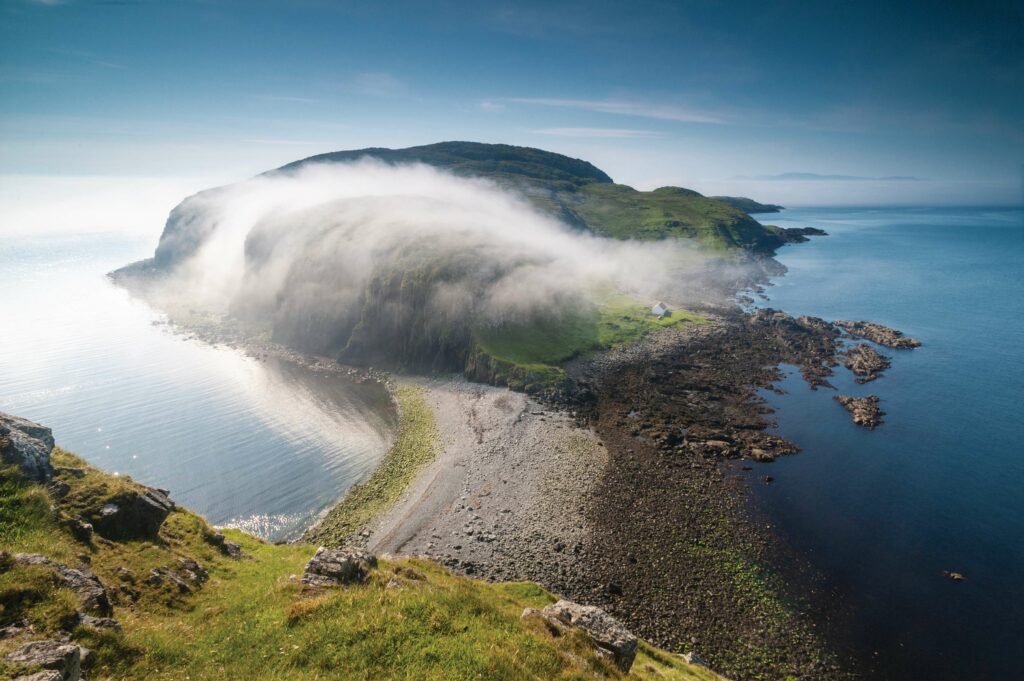
The uninhabited tidal island Eilean an Taighe, meaning ‘house island’ or ‘home island’, is here partially obscured by drifting mist. One of the Shiant Isles in the Outer Hebrides, Eilean an Taighe is connected by an isthmus to Garbh Elean (meaning ‘rough island’), from where this photograph was taken. At high tide, the isthmus is covered by water, leaving Eilean an Taighe high and dry. Reaching 125m at its peak, the island was once settled, with ruined structures still visible on the southern side.
BLUE BEAUTY
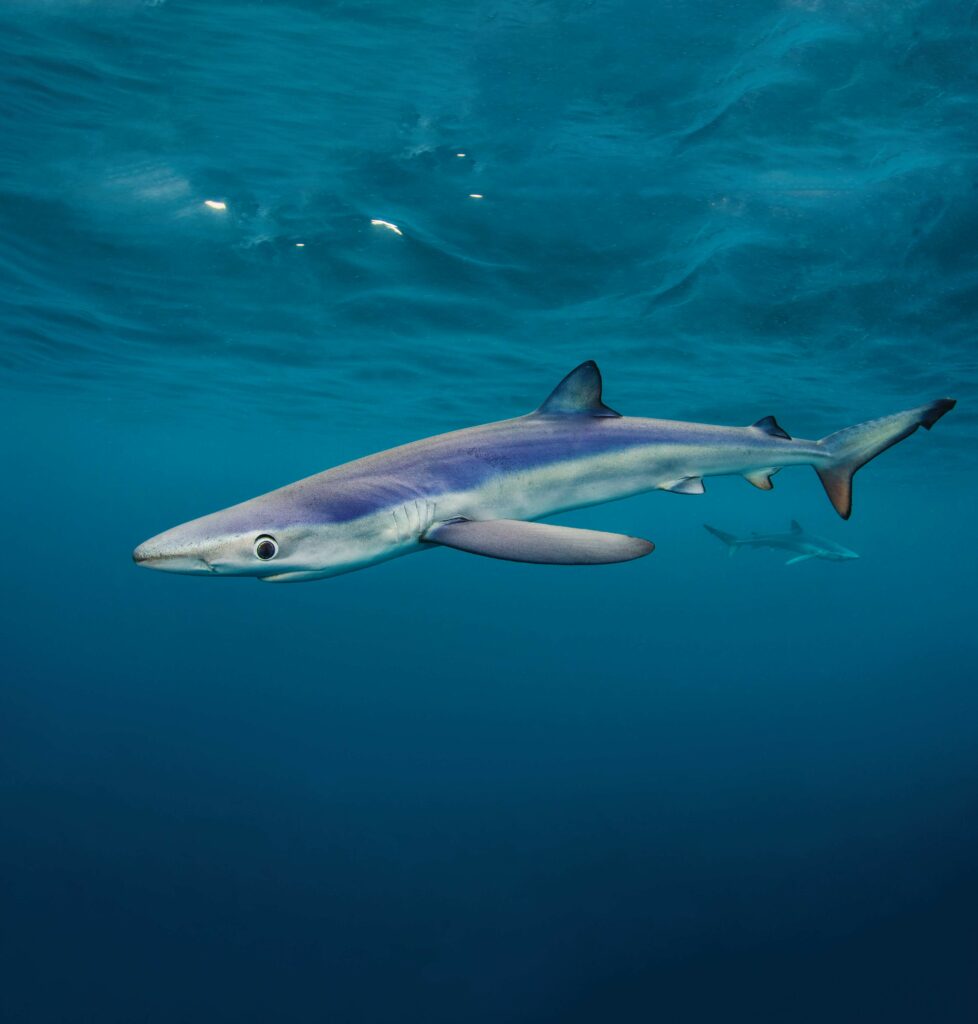
Blue sharks cruise beneath the sea’s surface near Penzance in Cornwall. Did you know that more than 40 species of shark can be found in British waters, at least 21 of which live here year round? Held on 14 July, Shark Awareness Day aims to dispel the myth that all sharks are dangerous. You can support these formidable fish with the Shark Trust’s Great Eggcase Hunt, searching for and recording mermaid’s purses (shark eggcases) on the shore. sharktrust.org/greateggcasehunt
CHALLENGE YOURSELF
PLASTIC FREE JULY
Can you give up single-use plastic for a whole month?
Every year, millions of tonnes of plastic end up in the ocean. Most of this comes from what we throw away and flush down the loo, such as wet wipes, carrier bags and plastic-lined coffee cups. UK governments play a huge role in changing legislation to reduce plastic pollution, but there are many small steps we can take to help, too, from buying less plastic and reusing what we have, to being careful what we flush down the toilet.
Why not try Plastic Free July and avoid single-use plastic for the entire month? Bring a reusable coffee cup to your favourite café, find alternatives to plastic-wrapped food (local fruit and vegetable stores are great for this), use bar soaps instead of liquid soaps and take reusable bags to the shop. Plastic Free Foundation has a superb website filled with info to help you on your journey: plasticfreejuly.org.
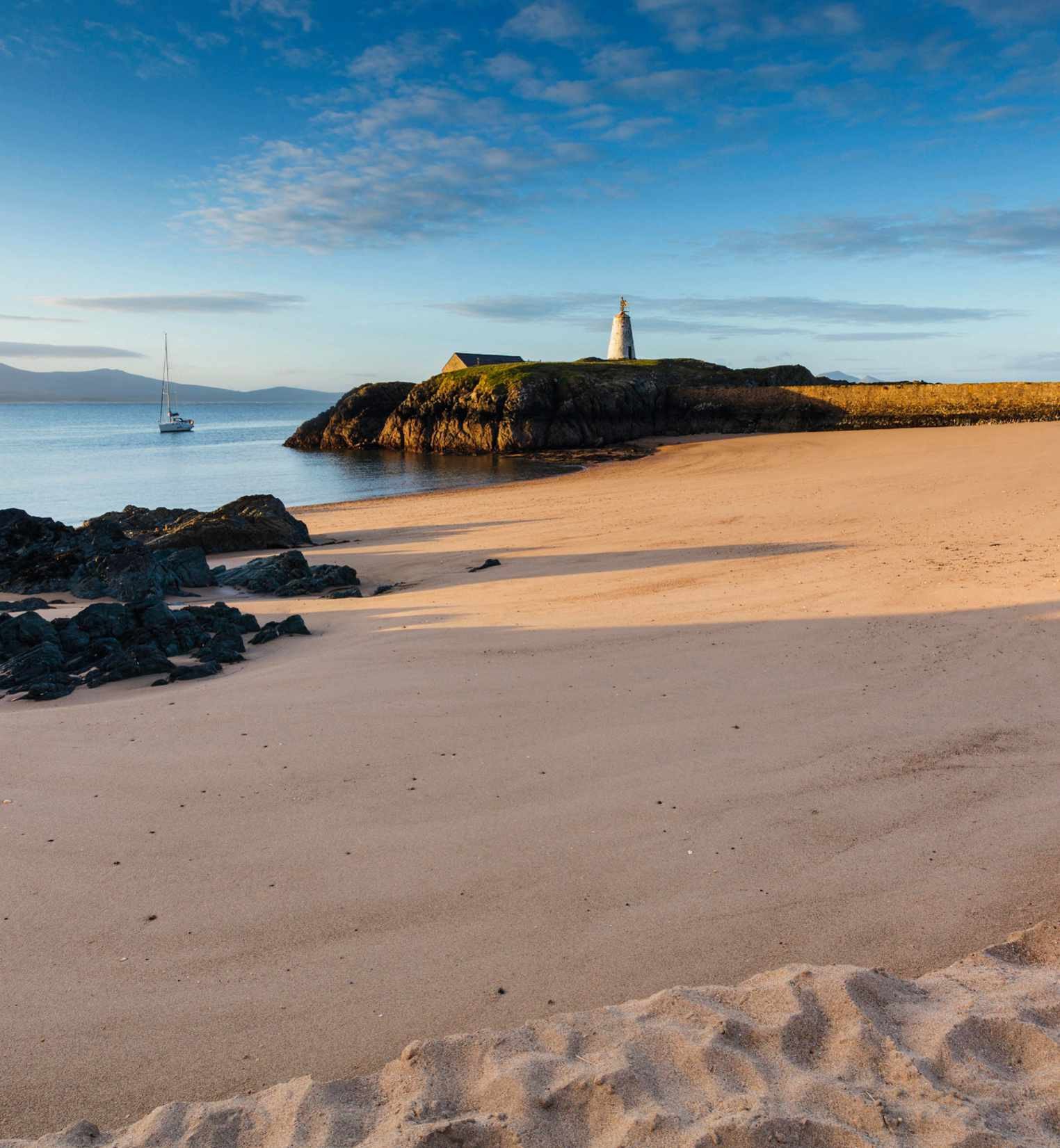
22 July – 6 August
National Marine Week
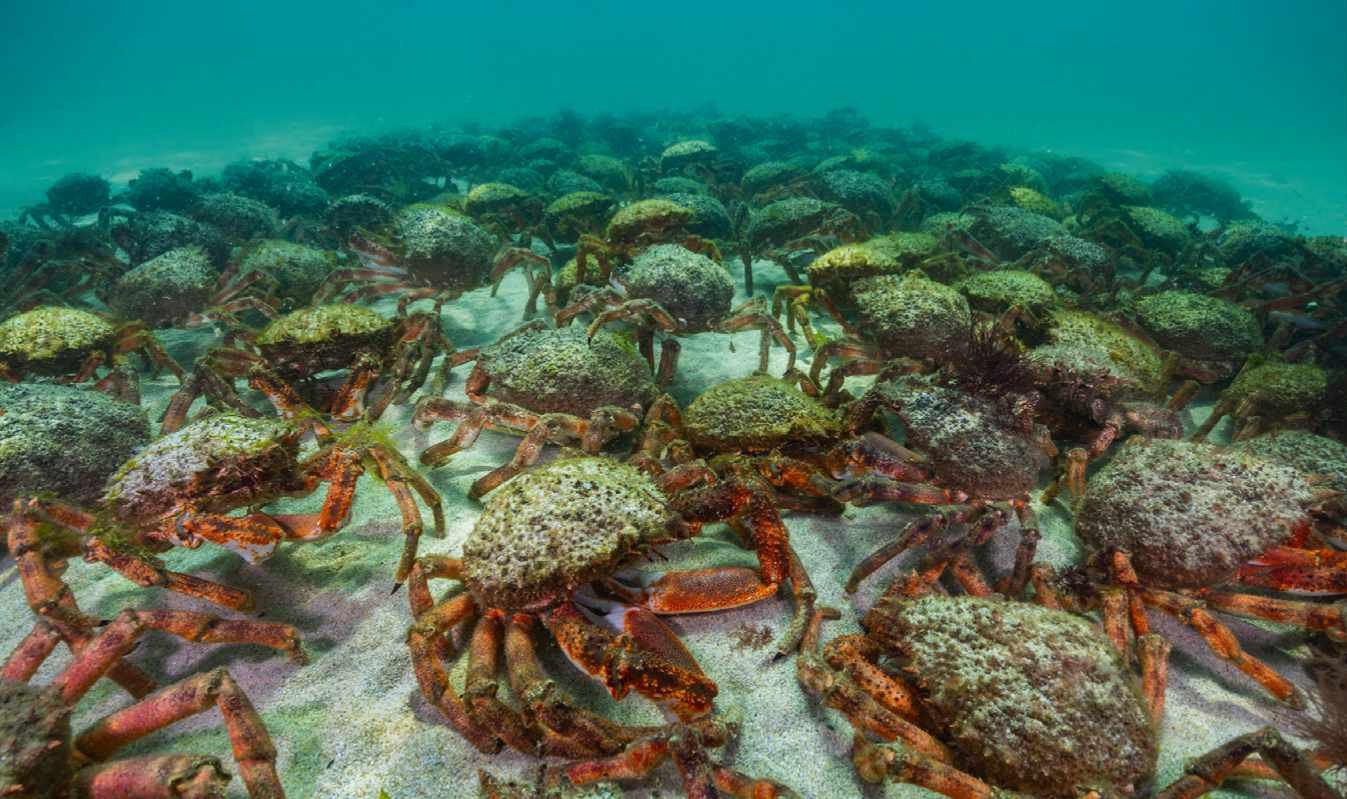
National Marine Week is The Wildlife Trusts’ annual celebration of the UK’s coasts, seas and marine wildlife. The week aims to highlight the magnificence of our marine environments and ways you can help protect them. Children and adults can join in both at home and out on the shore: challenge yourself to a marine word search; make a seal mask or create an egg-carton crab; join a littler pick or beach clean; or download a shoreline-detective spotting sheet and search for a range of species. Find out more at wildlifetrusts.org/national-marine-week or the junior branch of The Wildlife Trusts wildlifewatch.org.uk/national-marine-week.
14 July – 6 August
Big Butterfly Count
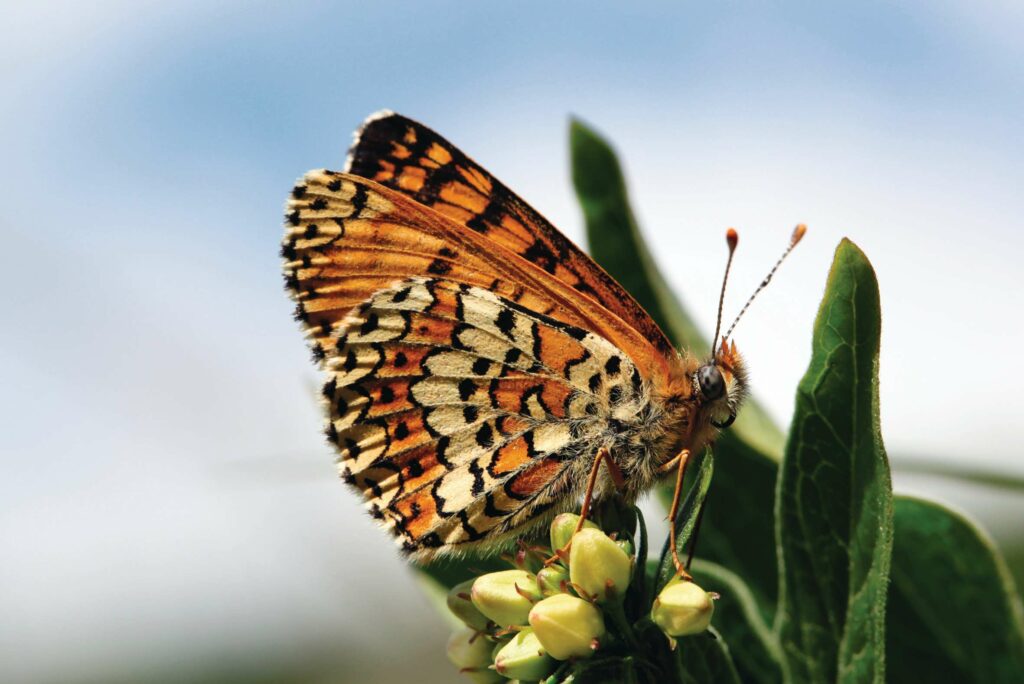
The Glanville fritillary is a butterfly restricted to coastal landslips on the southern half of the Isle of Wight, the Channel Islands and one or two more locations on the coast of mainland Britain. With just a handful of breeding areas, understanding this vulnerable species is vital. That’s where you can help. The Big Butterfly Count is a UK-wide survey aimed at helping us assess the health of our environment by counting the amount and type of butterflies we see. To get your free butterfly ID chart and to log your findings, visit bigbutterflycount. butterfly-conservation.org.
RECIPE
PINEAPPLE WEED AND COCONUT ICE LOLLIES
These lollies give a cooling hit of sweet, grassy pineapple weed, followed by a layer of puréed pineapple sitting on a sweet coconut base. You will need a lolly mould and traditional wooden sticks to make them.
MAKES 6 | VEGAN AND GLUTEN-FREE
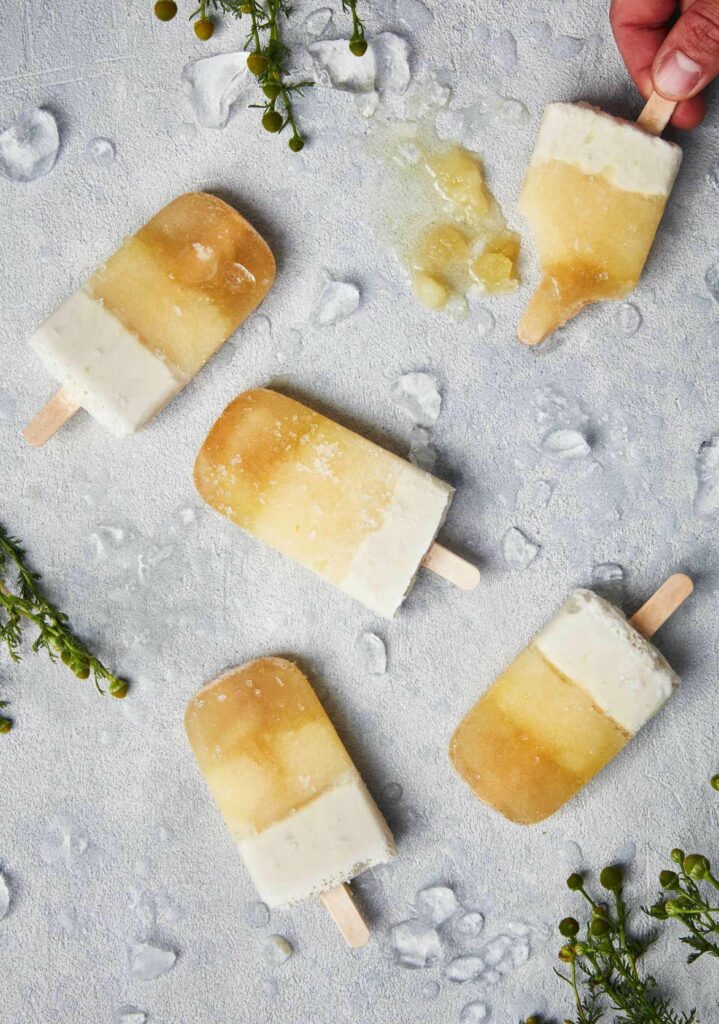
INGREDIENTS
100ml pineapple weed syrup (see recipe below)
200g canned or fresh pineapple, puréed in a blender
100ml coconut milk
METHOD
1 Mix 50ml of the pineapple weed syrup with 100ml water and pour into the six lolly moulds so each one is equally filled. Freeze for two 2 hours.
2 Take the moulds of the freezer and pour in the puréed pineapple to form the second layer, dividing the mixture equally between the moulds. If using wooden lolly sticks, the syrupy layer should be firm enough now to push a stick into each so the sticks stay upright. Freezefor a further hour.
3 Combine the remaining syrup with the coconut milk, stir well then top up each mould. If using lolly moulds that have built-in sticks on the lids, place the lids on now and return to the freezer. Eat within one month if using an unlidded lolly mould with wooden sticks, and within six months if using a lidded one.
HOW TO MAKE PINEAPPLE WEED SYRUP
Feathery-leafed pineapple weed thrives in well-trodden areas, hence its nickname, ‘street weed’. Its pineapple-shaped flowerheads make a fruity syrup.
MAKES 500ML VEGAN AND GLUTEN-FREE
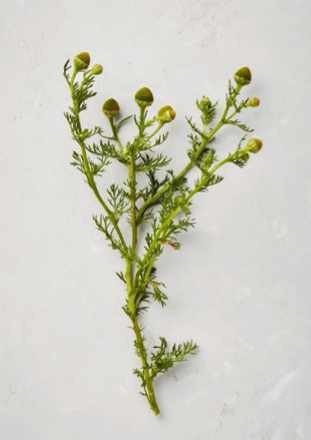
INGREDIENTS
• 150g pineapple weed flowerheads (no stalks)
• 250g golden granulated sugar
• 2 tbsp pineapple juice
METHOD
Place the flowerheads and 500ml water in a small saucepan and simmer over a low heat for five minutes, then leave to cool. Strain through a jelly bag or fine sieve, squeezing out all the liquid you can, then discard the flowerheads and add the liquid back into the pan, along with the sugar and pineapple juice. Bring to a simmer over a low heat, stirring, and cook for a further three minutes. Refrigerate in a sterilised bottle for up to three months.

Recipes from Wild and Sweet by Rachel Lambert (Hoxton Mini Press, £25)
DON’T MISS
SEASIDE CELEBRATIONS

1 Scottish Traditional Boat Festival, Aberdeenshire, 30 June – 2 July
This summer, a flotilla of heritage boats will descend on the historic harbour of Portsoy to mark the 30th anniversary of the Scottish village’s vibrant boat festival. Expect music and dance, fine Scottish food and age-old crafts.
stbfportsoy.org
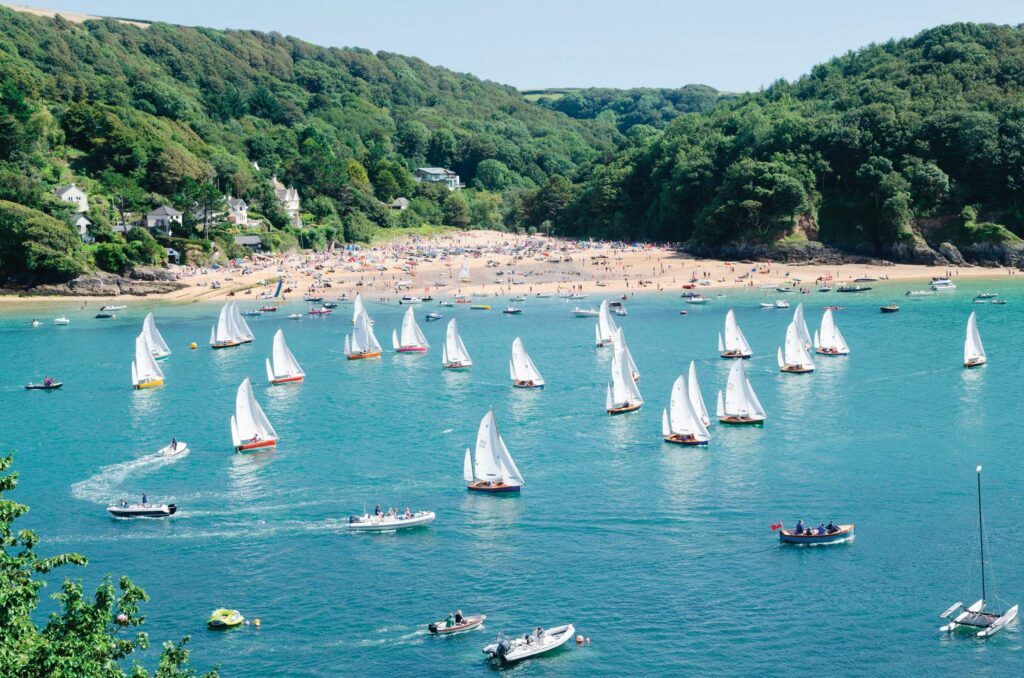
2 Salcombe Town Regatta, Devon, 29 July – 5 August
On your marks, get set, go! Alongside the exhilarating sailing races, this year’s regatta will include sandcastle competitions, crab catching, illuminated fishing boats and a cracking firework display.
salcomberegatta.co.uk
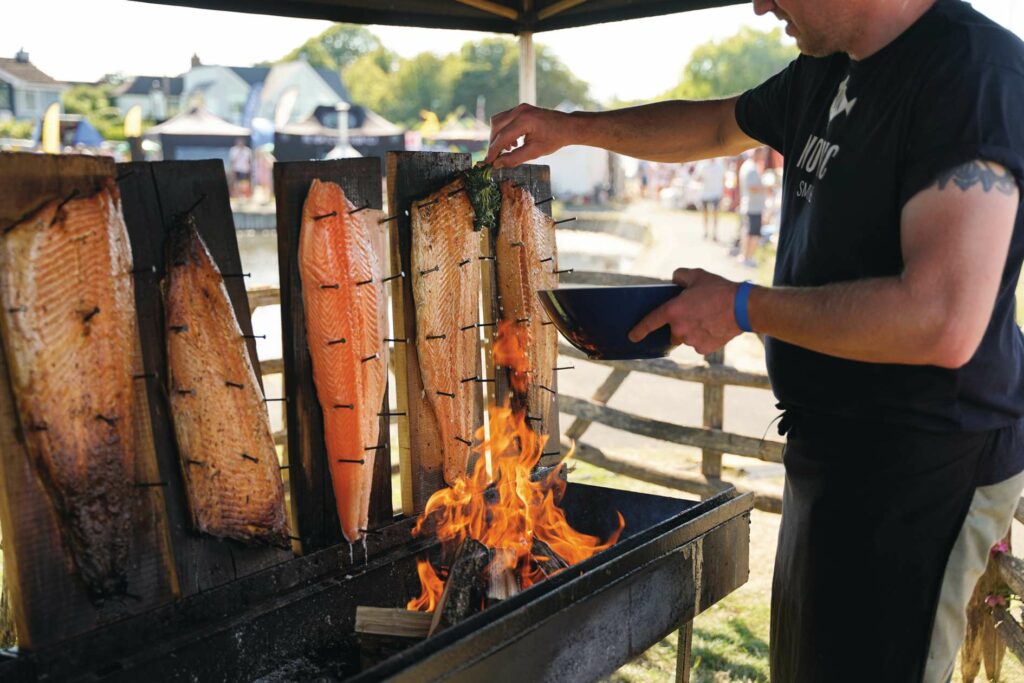
3 Lymington Seafood Festival, Hampshire, 14–16 July
Set on the coast of the New Forest, this charming boutique festival brings together the region’s best artisan food and drink producers, live music and entertainment. lymingtonseafoodfestival.co.uk
Countryfile on TV
BBC ONE, SUNDAYS

2 July
In celebration of the most acclaimed British countryside writer Ronald Blythe (below), who passed away earlier this year at the age of 100, this episode revisits the professions that featured in Blythe’s fictional world of Akenfield in rural Suffolk. Beginning in the village of Charsfield, John Craven and Margherita Taylor get hands on with blacksmiths, thatch roofers and orchard workers and find out how they are keeping their trades alive.
MAKE DO AND MEND
HOW TO REPAIR A WETSUIT
Got a small tear or cut in your wetsuit? Repair it and stay warm this swimming season with our quick and easy guide. By Carys Matthews
You will need: neoprene glue; cotton bud; tissue paper
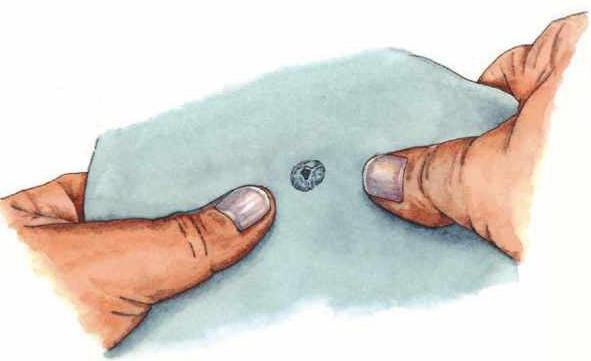
1. Fold the wetsuit at the point of the cut or rip, gently easing it open to expose the tear without making the hole too much bigger.
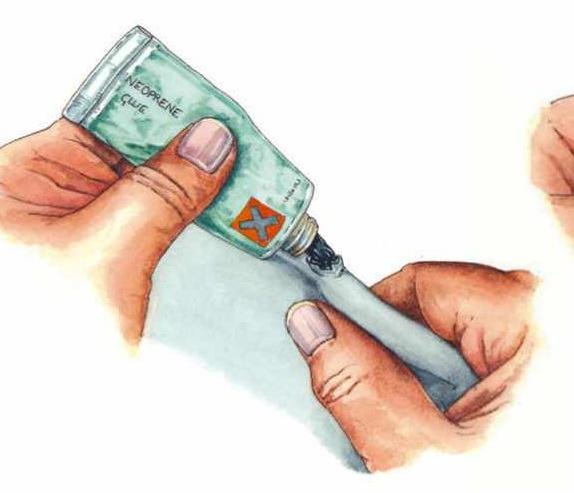
2. Apply a thin layer of neoprene-specific glue (do not use superglue) to the cut or hole, ensuring it is distributed over both sides of the opening.
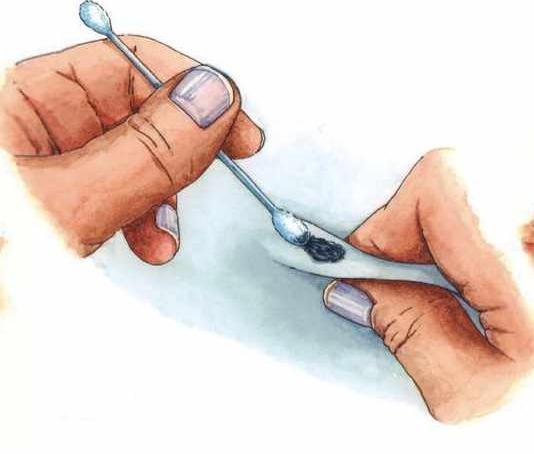
3. Use a cotton bud to spread the glue around the cut, making sure you push some of the glue into the back of the opening, too.
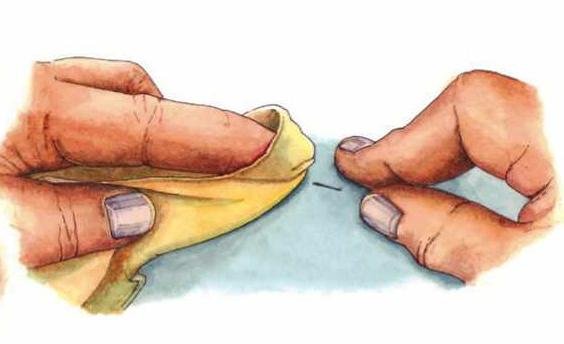
4. Wait for the glue to go tacky before pushing the cut back together. Use a tissue to wipe off any excess glue. Leave the wetsuit to dry overnight.
ID GUIDE
TERNS OF BRITAIN
Terns are like gulls but with sharp bits: sharp, slender bills, sharp wingtips and sharp tails with swallow-like forks. Most also have sharply defined black caps. They are lighter on the wing and altogether less bulky, but they are every bit as noisy as gulls. Britain’s terns are summer birds and most depart for West African coastal waters in the autumn. Here are six to spot…
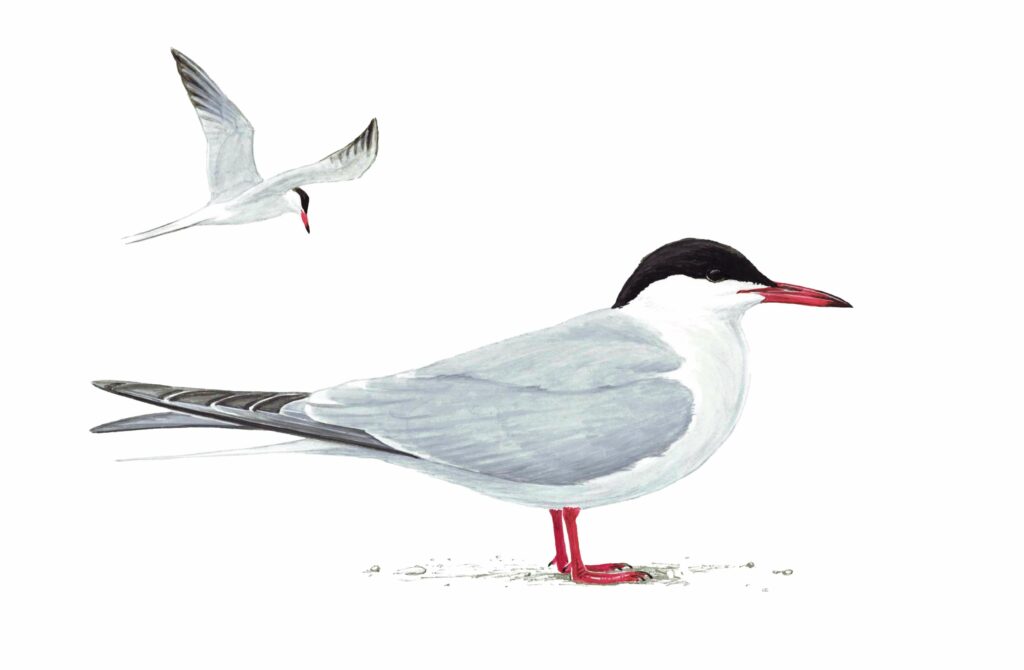
COMMON
Sterna hirundo
The common tern isn’t quite our most numerous tern but it is, perhaps, the most adaptable. You are as likely to see it on a lake far inland as you are on the coast – it also has a broad diet that can include insects as well as fish. The common tern has a long red bill with a black tip, and rather a flat crown. It is common from April to October, with 11,000 breeding pairs; on Amber List of Conservation Concern.
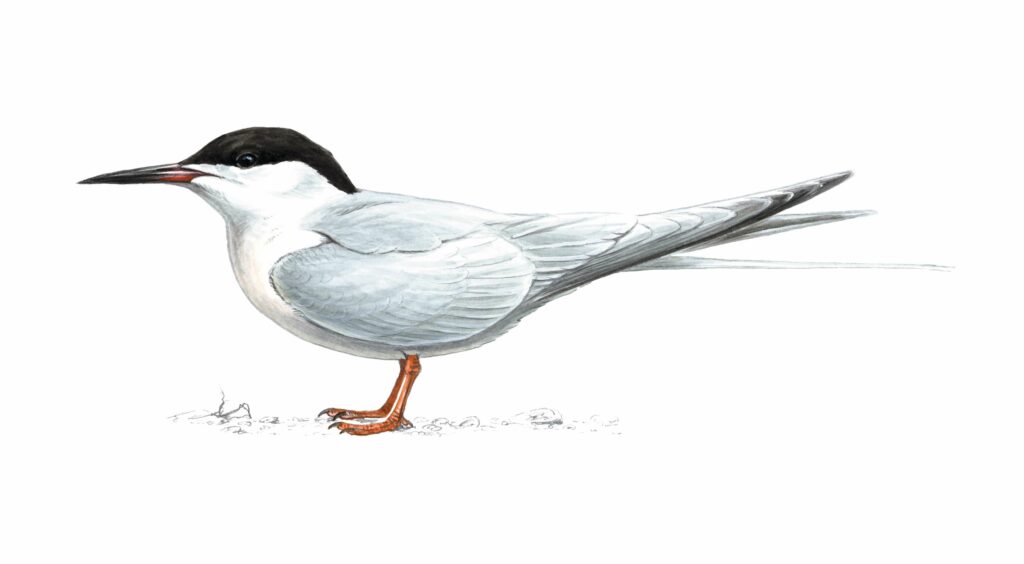
ROSEATE
Sterna dougallii
The roseate tern has a pink breast and belly, but it’s subtle pink at best, and you are often hard-pressed to detect the tint at all. A good way to identify this bird is by the very distinctive call, a disyllabic chewit, like a short and gentle blow of a referee’s whistle. These birds are truly rare in Britain, with 94 breeding pairs. They are mainly found on a few marine islands from May to September.
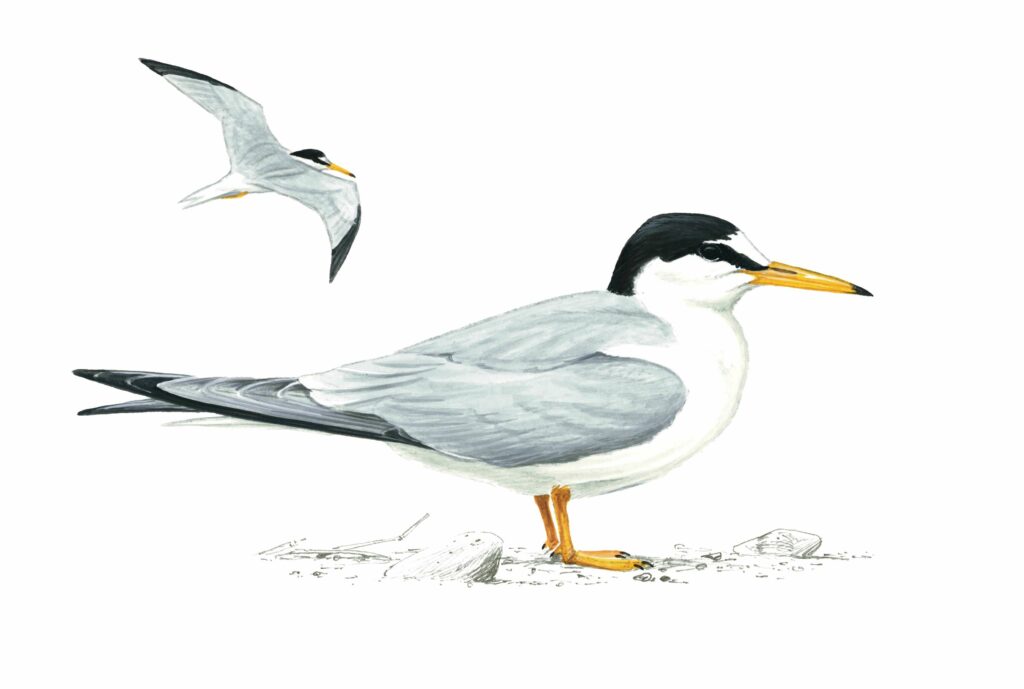
LITTLE
Sternula albifrons
This delicate bird certainly lives up to its name as the smallest of our terns. It has a brilliant white patch on the forehead and, if you get close enough, you will see that it has a yellow bill with a narrow black tip. Another identifying feature is its very odd call, perhaps like a sandwich tern calling while holding its nose. This is a rare bird in the UK, with 1,500 breeding pairs, seen from April to August.
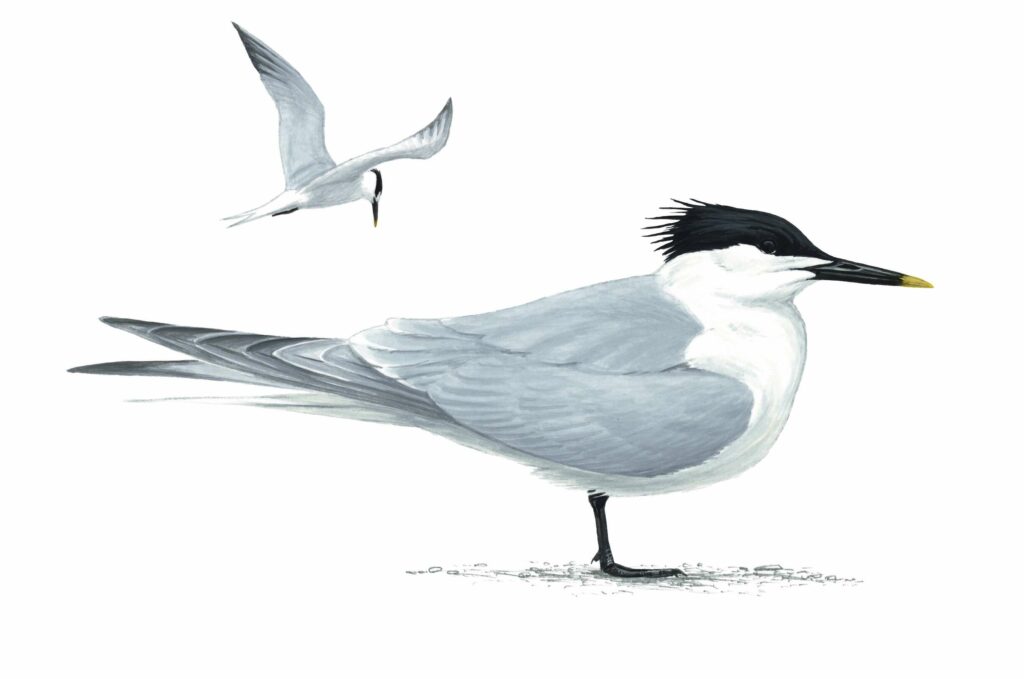
SANDWICH
Thalasseus sandvicensis
Our largest tern, the sandwich tern is the same size as a black-headed gull. It is a coastal bird, both common and widespread. The black cap has an obvious crest, visible in spring and early summer, while the bill is long and black with a yellow tip. Listen out for its kree-ick call. There are 14,000 breeding pairs in the UK, seen here from March to October, with a few overwintering.
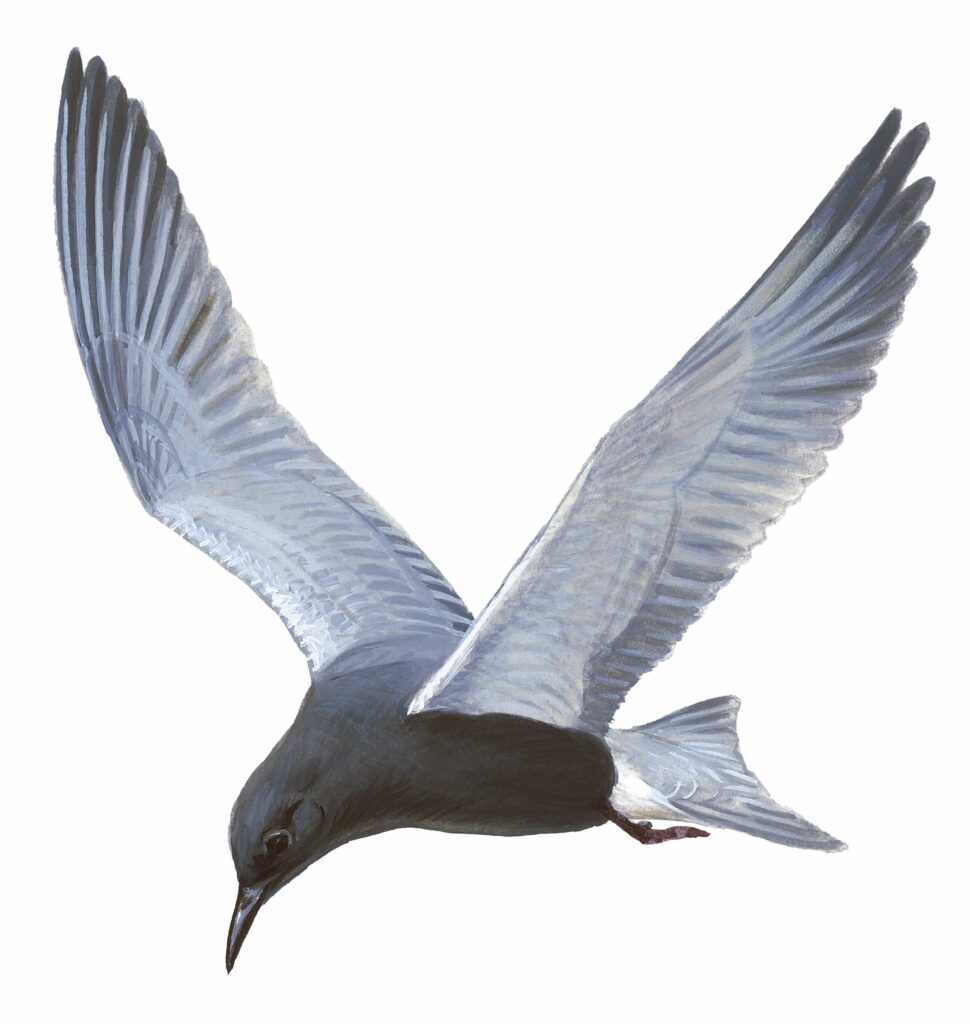
BLACK
Chlidonias niger
This is very much the “other” tern of this list, an uncommon passage migrant that doesn’t normally breed in Britain, seen from May to September. It has long wings but a very short tail in comparison to other terns. In summer, it has a beautiful inky-black body plumage and paler grey wings – as well as red legs. In autumn and winter, it is distinctively blackish, with a black cap and hood behind the eye.
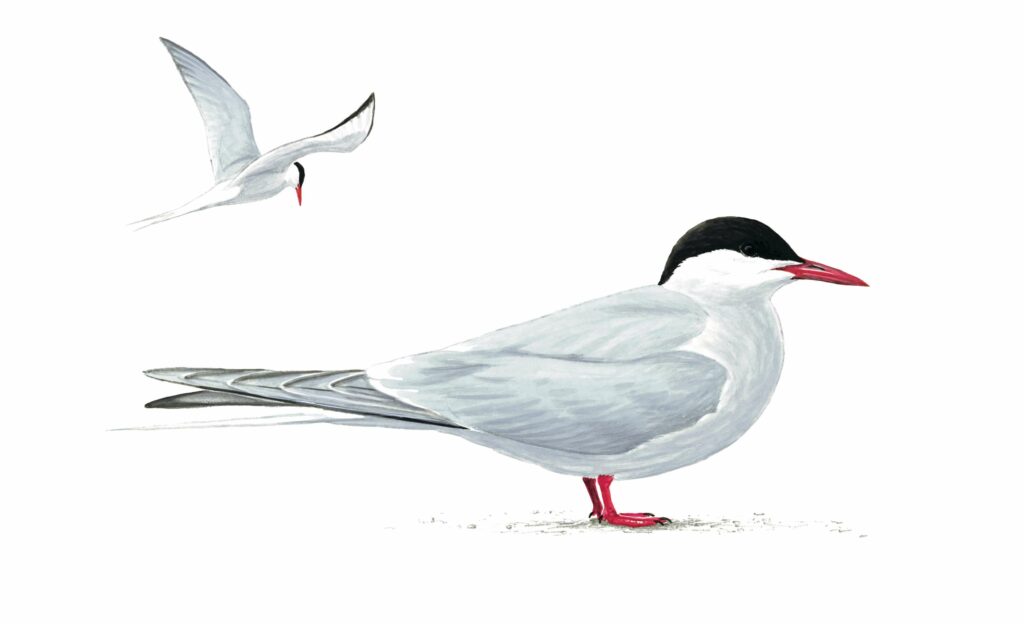
ARCTIC
Sterna paradisaea
Meet the bird with the longest regular migration in the world. The Arctic tern breeds in the northern hemisphere then flies all the way to Antarctica, where it spends our winter, covering as much as 90,000km in a year. It is similar in appearance to a common tern but its wings look whiter and it has a longer tail. Common from April to October, mostly in northern Britain, with 52,500 breeding pairs.